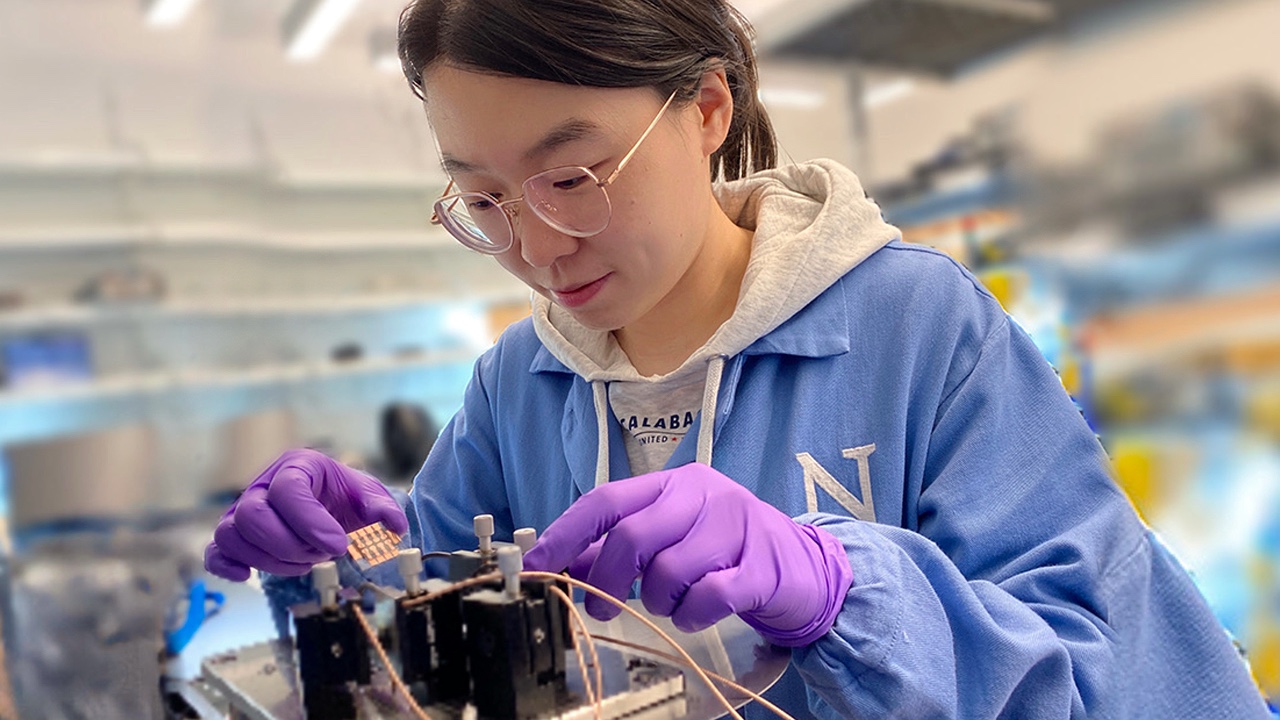
A breakthrough in solar technology has pushed the efficiency of perovskite solar cells to an impressive 26.3%, thanks to an innovative protective coating (Source: Northwestern University).
Developed by researchers at Northwestern University, this new coating doesn’t just improve efficiency — it also significantly extends the lifespan of these cutting-edge solar cells. Unlike traditional ammonium-based coatings, the amidinium-based layer used in this study proved to be 10 times more resistant to breaking down during experiments. Additionally, it tripled the cells’ T90 lifetime, the time it takes for efficiency to drop by 90% under tough conditions like extreme heat and light.
A Smarter Protective Layer
The research team, co-led by Northwestern’s Bin Chen, focused on an often-overlooked aspect of solar cell design: the protective layer. While much of the focus in solar research has been on stabilizing the perovskite material itself, Chen’s team took a different approach.
“By improving the protective layer, we were able to enhance the perovskite solar cells’ overall performance,” said Chen.
For those unfamiliar, perovskites are a class of materials that have gained attention for their high efficiency and relatively low production costs in solar technology. Their name refers to a specific crystal structure, and they’re used not only in solar cells but also in other energy applications like fuel cells and catalysts.
In photovoltaic (PV) solar cells, the most common type is metal-halide perovskites, made from organic ions, metals, and halogens. Unlike their oxygen-based counterparts used in other fields, these materials are specifically designed for converting sunlight into electricity.
Tackling Real-World Challenges
One of the critical challenges with perovskite solar cells has been maintaining their stability in real-world conditions. The new study, published in Science, offers a solution. The researchers developed a library of amidinium ligands to create a stronger, more thermally stable passivation layer for the perovskite surface. This innovation reduced the likelihood of the protective layer breaking down under heat and light while preserving its efficiency (Source: Northwestern University Research).
According to Mercouri Kanatzidis, another lead researcher on the project, this advancement addresses a major roadblock in the widespread use of perovskite solar cells. “By chemically reinforcing the protective layers, we’ve significantly advanced the durability of these cells without compromising their exceptional efficiency,” said Kanatzidis. This could pave the way for a cost-effective alternative to traditional silicon-based solar panels.
The Science Behind the Durability
The team achieved this breakthrough by replacing unstable ammonium groups with a more durable amidinium structure through a process called amidination. This small but impactful chemical tweak allowed the solar cells to withstand harsh conditions for much longer.
In testing, the newly coated solar cells maintained 90% of their original efficiency after 1,100 hours of exposure to extreme heat and light. This represents a T90 lifetime that’s three times longer than previous versions, a massive step forward for perovskite technology (Source: PV Magazine).
By addressing both efficiency and durability, this research could help bring perovskite solar cells closer to widespread adoption. With their low-cost manufacturing potential and improved resilience, these cells might soon become a serious competitor to silicon-based systems.